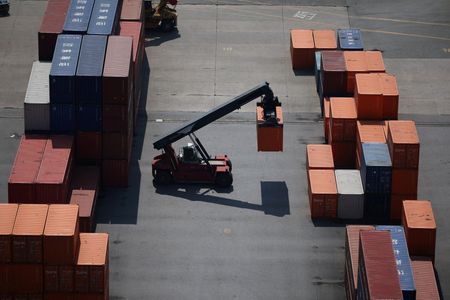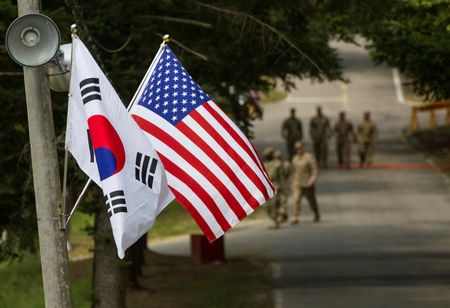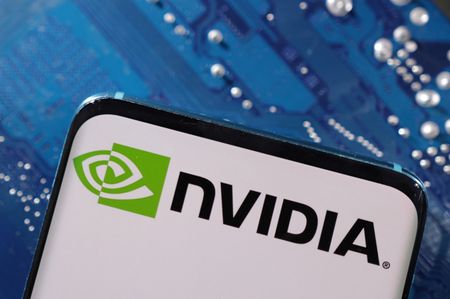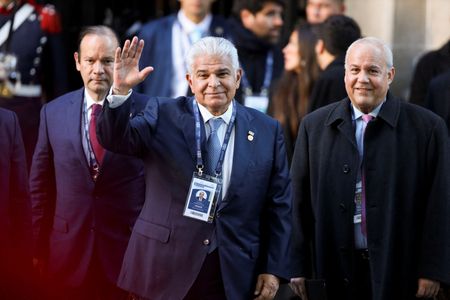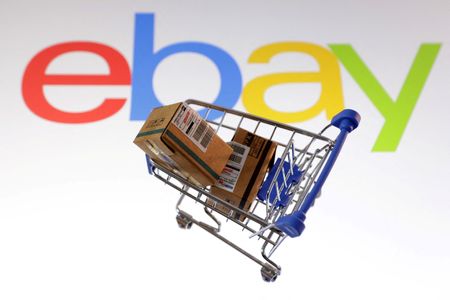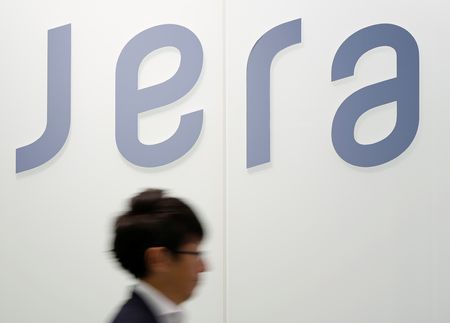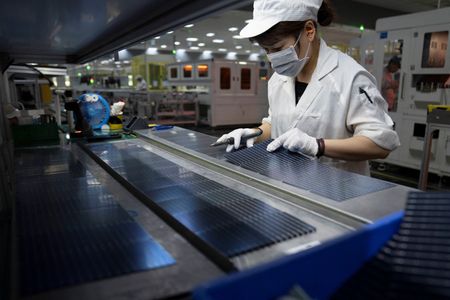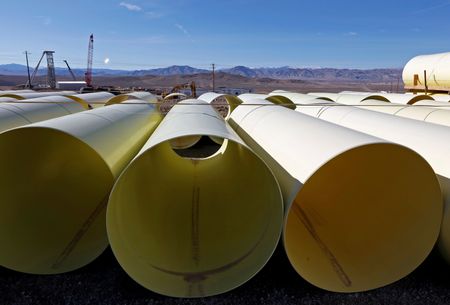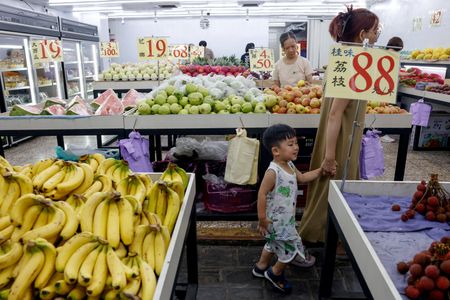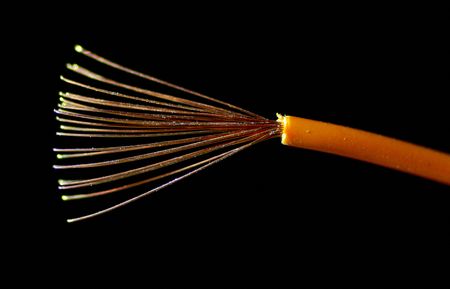By Trevor Hunnicutt and Ju-min Park
WASHINGTON/SEOUL (Reuters) -President Donald Trump said on Wednesday the U.S. will charge a 15% tariff on imports from South Korea, down from a threatened 25%, as part of a deal that eases tensions with a top-10 trading partner and key Asian ally.
South Korea also agreed to invest $350 billion in the United States in projects selected by Trump and to purchase energy products worth $100 billion.
The arrangement, announced after Trump met with Korean officials at the White House, came during a blizzard of trade policy announcements. Many countries are rushing to cut deals ahead of August 1, when Trump has promised higher tariffs will kick in.
“I am pleased to announce that the United States of America has agreed to a Full and Complete Trade Deal with the Republic of Korea,” Trump wrote on Truth Social.
The negotiations were an early test for South Korean President Lee Jae Myung, who took office in June after a snap election. He said the deal eliminated uncertainty and set U.S. tariffs lower than or at the same level as major competitors.
“We have crossed a big hurdle,” Lee said in a Facebook post. Trump said Lee would visit the White House “within the next two weeks” for his first meeting with the U.S. president.
South Korea will accept American products, including autos and agricultural goods into its markets and impose no import duties on them, Trump added.
South Korea’s top officials said the country’s rice and beef markets would not be opened further, and discussions over U.S. demands on food regulations continue.
Seoul appeared to have defended its non-tariff barriers while keeping its tariff rate on par with Japan and the European Union, said Citi economist Kim Jin-wook.
“While the headline figure looks like a huge win for the U.S., details appear to be favorable for South Korea,” he said.
DEVIL IN THE DETAILS
South Korea seems to have avoided the worst, agreed Cheong In-kyo, a former South Korean trade minister. But he also said opinions about the deal could change if the $350 billion was not well spent.
It was not clear what the investment would involve, where the financing would come from, over what time frame deals would be implemented and to what extent their terms would be binding. Trump said additional South Korean investments would be announced later.
Of the total, $150 billion is aimed at a shipbuilding partnership, while $200 billion would include chips, nuclear power, batteries, and biotechnology, Kim Yong-beom, the South Korean presidential office’s policy chief, told a briefing.
He said “ambiguity is good”, while adding that negotiators had ensured there would be safeguards over how the funds were used.
Existing investment plans by South Korean companies would be part of the fund, according to another presidential official.
U.S. Commerce Secretary Howard Lutnick said in a post on X that 90% of the profits from the $350 billion fund were “going to the American people.”
Kim said South Korea understands that to mean that some profits could be reinvested.
The energy purchases would include LNG, LPG, crude oil, and a small amount of coal, he added.
“This is within our usual import volume,” he said, noting it might lead to a “slight shift” in the country’s mix of imports from the Middle East to more American sources.
Lutnick said the energy purchases would happen “over the next 3.5 years.”
The tariff rate on South Korean autos would also be 15%, Lutnick said, which is down from the current rate of 25%. Lutnick also said semiconductor and pharmaceutical exports would not be treated more harshly than those from other countries. Steel, aluminum, and copper were not covered by the new deal.
SCRAMBLE IN SOUTH KOREA
South Korea is one of three Asia-Pacific countries that had a comprehensive free trade agreement with the United States, but that did not spare it from new tariffs.
Negotiations took place in a turbulent political environment in South Korea with former President Yoon Suk Yeol removed in April after he was impeached for trying to impose martial law. Pressure on negotiators increased after Japan clinched its deal earlier this month.
South Korea has been a particular target of Trump for its trade surplus and the cost of maintaining some 28,500 U.S. troops in the country to defend against North Korea. Last year South Korea posted a record $55.7 billion trade surplus with the United States, up 25% from a year earlier.
South Korean companies welcomed the deal, saying it would reduce uncertainty.
Amid the last-minute push to reach a tariff agreement, Samsung Electronics inked a $16.5 billion chip deal with Tesla. LG Energy Solution also signed a $4.3 billion deal to supply Tesla with energy storage system batteries, a person familiar with the matter said.
(Reporting by Trevor Hunnicutt and Ju-min Park; Additional reporting by Joyce Lee, Jihoon Lee, Hyunjoo Jin, Josh Smith, Ed Davies, and Jack Kim in Seoul; Writing by Trevor Hunnicutt and Josh Smith; Editing by Stephen Coates and Edwina Gibbs)

